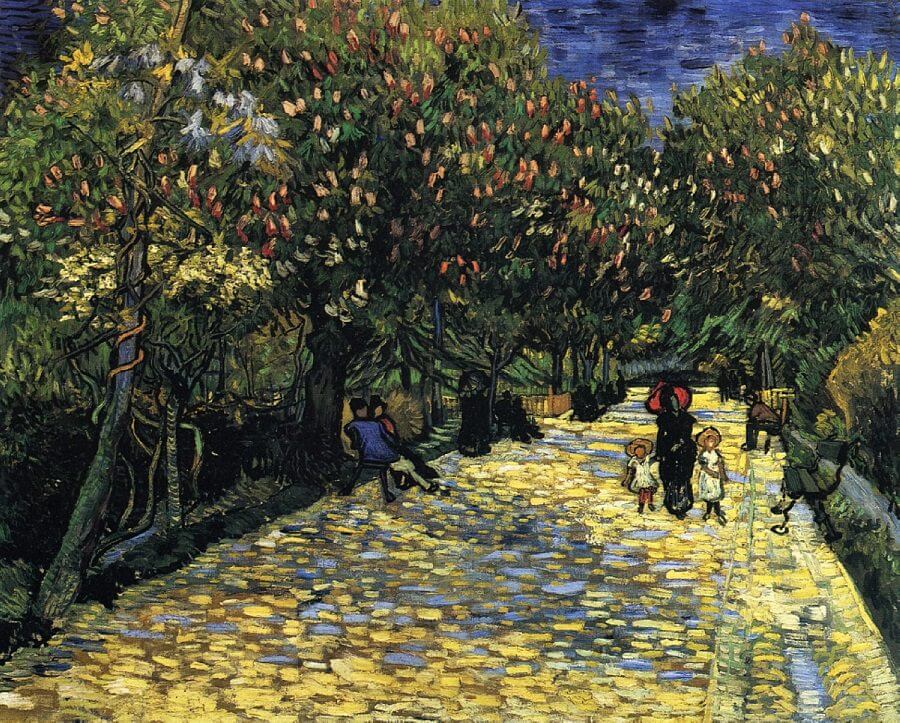Avenue with Flowering Chestnut Trees, 1889 by Vincent Van Gogh

Van Gogh painted Avenue with Flowering Chestnut Trees in 1889. The painting's merit lies primarily in the style, which, just as in the case of most of the other park views, is impressionist in nature. That free and lively manner of painting, here given an individual interpretation, was only one of the styles used by Van Gogh, but certainly not the least important for the very reason that in using it he was associating himself with the tradition. At the same time, he was trying to secure a place among the avant-garde by following in the decorative path marked out by Claude Monet and Gauguin, and it is therefore instructive to compare this impressionist avenue and its strolling figures with the more decorative views of Les Alyscamps.
Van Gogh counted this canvas among his true oeuvre. The view of the park, he wrote when he dispatched the painting, could stand on a par with The Green Vineyard, The Red Vineyard, The Harvest and The Starry Night over the Rhone (Musee d'Orsay, Paris), all acknowledged masterpieces. He moreover wished to paint a small copy for the collection of his mother and sister, who received replicas of his best work. However, this intention remained unfulfilled.




















